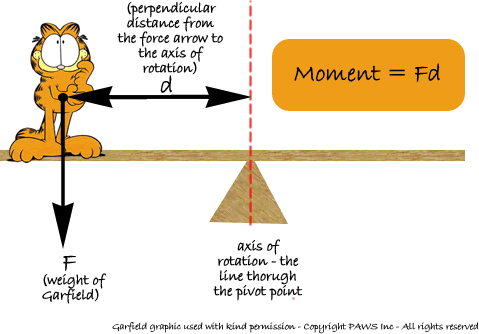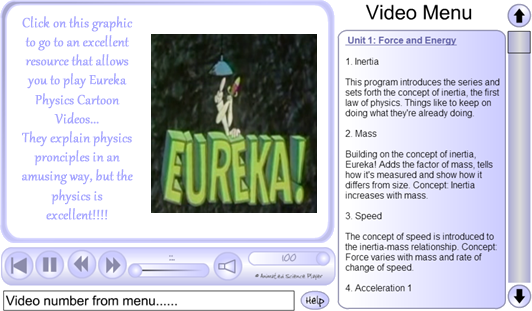    |
||||

Moments and Levers |
||||
|
Moments in physics have nothing to do with time! The moment of a force is the turning effect that it has. It is measured in newton metres (Nm) The ability of a force to make an object turn depends on TWO factors:
When the force is supplied by a weight its centre of gravity is the point from which the force arrow is drawn. It goes vertically down. To find the perpendicular distance for use in the calculation of the moment, you need to draw a perpendicular line from the weight arrow to the line that passed through the fulcrum (axis of rotation!). (You sometimes have to draw dashed construction lines to do this!).
If it were just a force it would be measured in N... but the moment of the force is measured in Nm which has the same dimensions as energy. At GCSE they expect you to define the distance in a particular way - so learn the phrasiology by heart! Moment = force × perpendicular distance from the line of action of the force to the axis of rotation That's quite a mouthful - but learn it! - in calculations you can get away with a shortened version: Moment = Fd Click here for Simple Machines Click here for the Principle of Moments How to 'teeter-totter' or 'see-saw' with someone bigger than you!
A small force can have the same effect as a big one if it is applied a greater distance from the fulcrum or turning point. You can use the moment principle to maximise the effect of a force you apply. Click here to go to the page on the Principle of Moments Questions
|
||||
 |
||||


 Be careful not to call the moment just a 'turning force' - the 'turning force' is only part of the moment...
Be careful not to call the moment just a 'turning force' - the 'turning force' is only part of the moment... 


